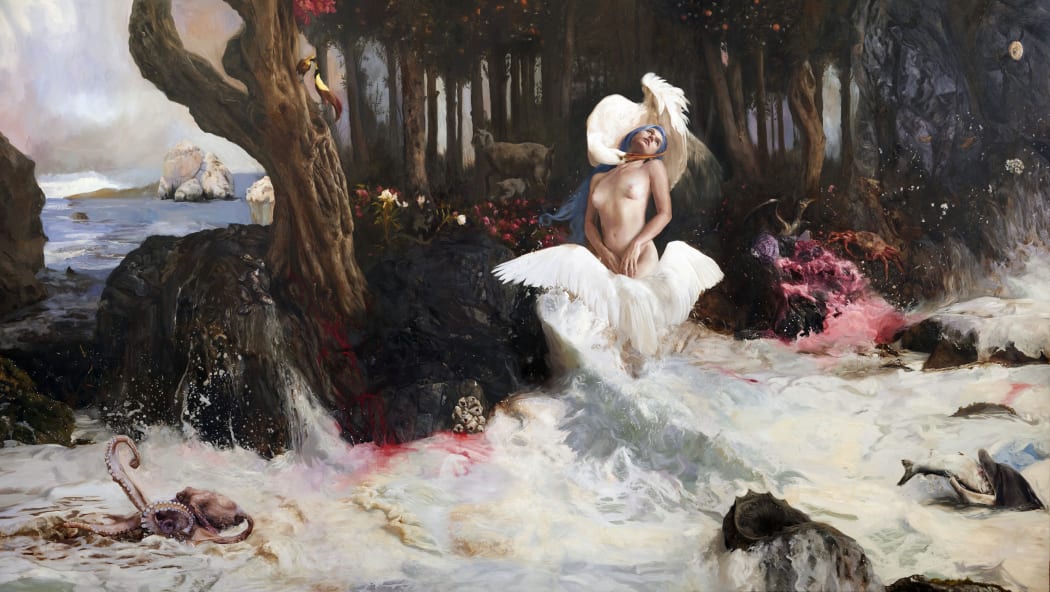
Studying the sources on the birth of Venus and its pictorial iconography, I decided to represent the very birth of the goddess in relation to its origin, which is the castration of Uranus and which is generally omitted in pictorial interpretations.
I wanted the sea foam (sperm of Uranus) to be a leading element as well as the blood that emerged from their genitals (symbolized in the tree with the rocks). From this mixture comes the Venus that is received by the goddesses "Horae”.
In this work those who receive Venus are represented as birds. I felt that this element gave a certain ambiguity and strength that the traditional representations did not give me.
Zephyrus (god of the wind), who brings Venus to shore, I represented him as an invisible presence but one that is felt in the painting through the stormy movements.
According to my own interpretation of the myth, Uranus wanted to transgress a natural order by preventing Gea from having more children. His search for eternity above the wishes of nature, and his ambition for power is destroyed by his most powerful son, Cronos (time) who castrates him, takes away his power of replication and therefore of true eternity and gives it to nature from where the goddess Venus arises with the purpose to motivate reproduction therefore the diversity and prevalence of life.
That is why I want the painting to include many living characters who speak of this effervescence of diversity.
I put in the composition a dolphin that is a symbol of Venus in pictorial iconography. This time I did it by gobbling a fish, to show the unpredictable, powerful and sometimes ruthless character of the goddess that contrasts with her almost innocent beauty.
There is also a quote to Boticelli in the forest behind inspired by the painting "Spring". I did it because I wanted to rescue those artificial representations of nature typical of the Renaissance as well as the linear perspective that contrasts with the sensual movement of the foam.
- Guillermo Lorca, January 2021

